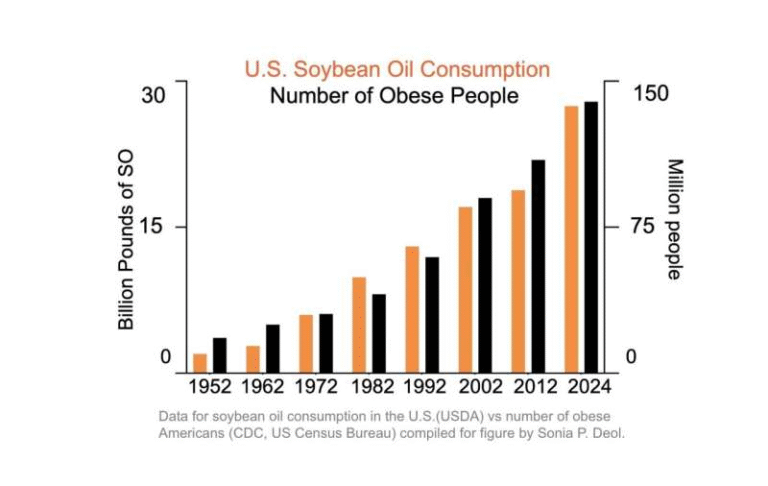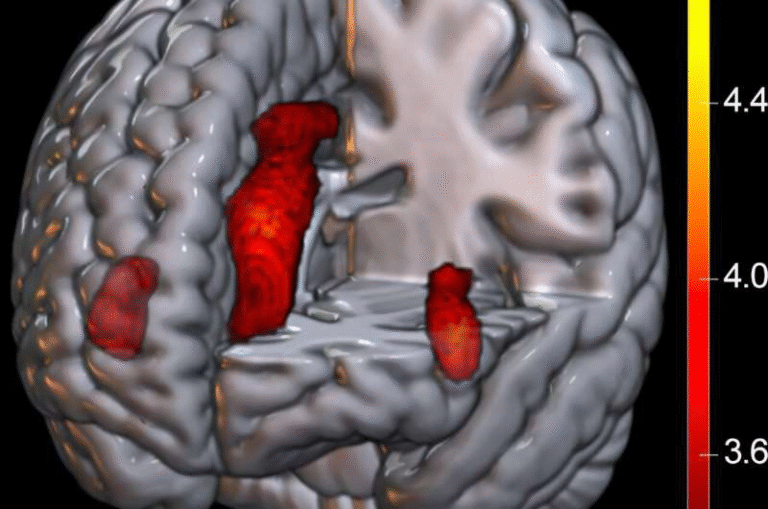Microscopic DNA Flowers: The Tiny Shape-Shifting Robots That Could Revolutionize Medicine

Scientists at the University of North Carolina at Chapel Hill have developed something that sounds almost too futuristic to be true—microscopic soft robots made from DNA, shaped like delicate flowers, that can fold, unfold, and react to their surroundings. These new structures, known as DNA flowers, could eventually deliver medicine directly to diseased cells, clean up pollutants, and even change how we think about digital data storage.
The research, led by Dr. Ronit Freeman and her team at the Freeman Lab at UNC, was published in Nature Nanotechnology under the title “Reversible Metamorphosis of Hierarchical DNA–Inorganic Crystals.” What they’ve managed to create is more than a beautiful concept—it’s a major step toward materials that behave like living systems.
What Exactly Are DNA Flowers?
The DNA flowers are microscopic crystals made by combining DNA strands with inorganic materials such as cobalt pyrophosphate. The end result looks like a tiny, soft flower, visible only under a microscope, but with the remarkable ability to change its shape in response to its environment.
This is achieved by programming the DNA itself. Each DNA strand acts like a molecular instruction set, guiding the structure to move or transform when triggered. When the environment becomes more acidic, certain parts of the DNA fold tightly, causing the flower’s “petals” to close. When conditions return to normal, the petals open again. This folding and unfolding process happens within seconds and can repeat indefinitely.
What makes this unique is that the movement is reversible and dynamic, something rarely achieved at such a small scale. Essentially, the team has created a new kind of active material—one that can sense and respond to the world around it.
The Science Behind the Shape-Shifting
The key to the DNA flower’s behavior lies in the arrangement of DNA sequences inside each crystal. The researchers used enzymatic DNA polymerization, specifically the enzyme terminal deoxynucleotidyl transferase (TdT), to embed long DNA strands—over 600 bases long—into the growing crystals. These DNA strands are designed with two types of blocks:
- Responsive blocks, made up of cytosine-rich sequences, which form special folded structures called i-motifs under acidic conditions.
- Inert blocks, like thymine-rich regions, which remain stable and unreactive.
When the surrounding pH drops, the cytosine-rich sections fold into i-motifs, pulling the crystal inward and making the flower “close.” When the pH rises back to neutral, the structure relaxes and opens. By changing how and where these blocks are arranged, scientists can control whether the flower bends, shrinks, twists, or blooms open.
This mechanism mirrors how living tissues or coral structures change shape in response to their environment—only here it’s done synthetically, using programmable DNA as the active element.
A New Class of Smart Materials
Most materials used in medicine or technology are passive—they don’t react on their own. What makes these DNA flowers exciting is that they represent a new class of “active” or “responsive” materials. They can sense changes (like acidity) and physically respond without any external mechanical input.
That means, in theory, they could operate autonomously inside the body or the environment. They could open, close, release substances, or even trigger chemical reactions—all by reading cues from their surroundings.
This combination of sensing and movement brings DNA flowers closer to biological behavior than any synthetic material of their kind. It’s a true merging of biology and nanotechnology.
Potential Medical Applications
The most talked-about application of DNA flowers is in targeted drug delivery. Imagine a microscopic capsule that could travel through the body, find a tumor, and release medicine only where it’s needed.
Cancerous tissues are often more acidic than healthy ones. A DNA flower could be designed to recognize that acidity, close its petals, and release a drug precisely at the tumor site. Once the environment normalizes—after the tumor shrinks—the flower could reopen and stop releasing medicine. This kind of precision delivery could minimize side effects and make treatments far more efficient.
Beyond drug delivery, the same principle could be used for:
- Performing tiny biopsies by collecting samples at specific sites.
- Clearing blood clots by physically interacting with targeted regions in the circulatory system.
- Monitoring disease recurrence, reopening and reactivating only if the problem returns.
Although these applications are still theoretical at this stage, the basic science demonstrates a clear path forward.
Beyond Medicine: Environmental and Data Applications
Interestingly, these DNA flowers could also have uses outside the body. The researchers envision versions that could be deployed in polluted environments to release cleaning agents only when certain chemical conditions are detected—like high toxicity levels in water. Once the job is done, the flowers could dissolve harmlessly, leaving no waste behind.
Another fascinating (and more futuristic) possibility is data storage. DNA itself is an incredibly dense medium for information—one teaspoon of DNA could theoretically hold up to two trillion gigabytes of data. DNA flowers, with their ordered crystal structure, could one day serve as micro-storage systems capable of storing, reading, and writing massive amounts of information in a compact, eco-friendly form.
While that’s still speculative, it highlights how multi-functional these materials could become.
Why This Discovery Matters
This research doesn’t just advance DNA nanotechnology—it fundamentally changes what’s possible in material science. For decades, scientists have tried to design materials that move, adapt, and think like living systems. The DNA flower represents a concrete step toward that goal.
It brings together:
- DNA nanotechnology, which allows molecular precision.
- Soft robotics, which focuses on movement and flexibility.
- Synthetic biology, which mimics natural processes using engineered components.
Together, they form a blueprint for materials that could one day act as autonomous microscopic robots—able to sense, decide, and respond without human control.
The Challenges Ahead
While the potential is extraordinary, the research is still in its early stages. Several challenges remain before DNA flowers can be used in real medical or environmental applications.
- Biocompatibility: DNA and inorganic materials must survive the body’s complex chemistry without breaking down too soon or triggering an immune response.
- Stability: These structures need to remain functional inside fluids, at body temperature, and under pressure.
- Specificity: Right now, the flowers respond mainly to changes in acidity. Scientists hope to expand this to other triggers like temperature, light, enzymes, or specific biomolecules.
- Manufacturing: Scaling up production to create uniform, reproducible DNA flowers is another major hurdle.
- Payload control: Researchers must figure out how much medicine each flower can carry, how quickly it releases it, and how to precisely stop that release.
Despite these challenges, the fundamental discovery—the ability to program inorganic crystals with DNA to create reversible, shape-changing behavior—is a major leap.
The Future of DNA-Based Nanotechnology
This breakthrough fits into a larger field called DNA nanotechnology, which uses DNA as a building material rather than just genetic code. Over the past two decades, scientists have used DNA to make nanorobots, logic circuits, and even programmable cages for molecules. But most of those systems are relatively static—they perform one action and stop.
What makes DNA flowers stand out is their dynamic nature. They can repeatedly change form, communicate chemical information, and physically interact with their surroundings. This opens the door to truly autonomous nanosystems—something long sought after in the field of nanomedicine.
It’s not unrealistic to imagine a future where swallowable or injectable micro-robots roam the body, diagnosing issues, delivering drugs, and even repairing tissues automatically.
The Broader Impact on Science and Technology
The implications go far beyond biology and medicine. Materials that sense and respond could transform how we design devices and infrastructure. Imagine coatings that heal themselves, sensors that adjust their sensitivity automatically, or construction materials that adapt to humidity and temperature in real time.
Even in computing, using DNA as a programmable, physical medium could lead to entirely new forms of molecular computers—ones that don’t just calculate but react to their environment.
The UNC team’s DNA flowers are an early but tangible example of how such hybrid materials—part biological, part synthetic—can behave in ways once reserved for living organisms.
A Step Toward the Convergence of Life and Machine
In essence, these microscopic flowers blur the boundary between what is alive and what is not. They can sense, move, and adapt—traits we usually associate with living systems. But they’re made from non-living materials and built through controlled chemistry.
That’s what makes this work revolutionary. It’s not just about creating a new type of material—it’s about bridging life and technology at the smallest possible scale. As research continues, we may see these DNA flowers evolve into fully functional, smart nanobots capable of interacting with the world in ways nature has long mastered.
The journey from lab to real-world application will take time, but this discovery marks a milestone in our ongoing effort to engineer life-like intelligence into matter itself.
Research Reference:
Reversible Metamorphosis of Hierarchical DNA–Inorganic Crystals – Nature Nanotechnology (2025)





